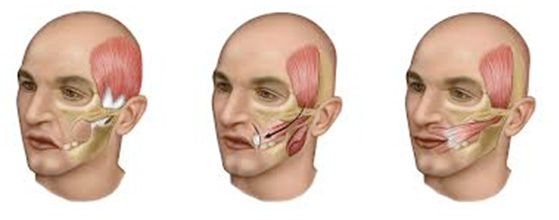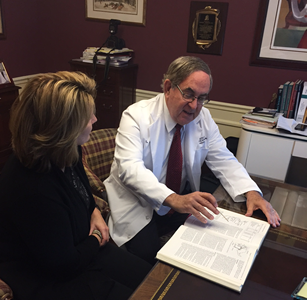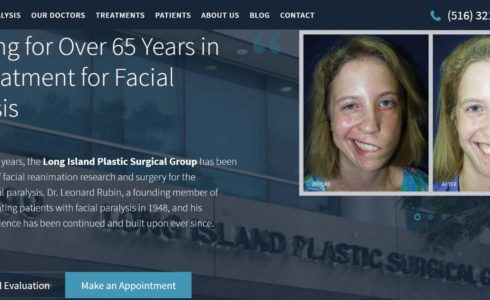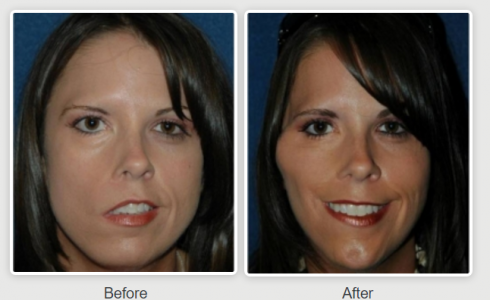
Muscle transfer is a proven way of using either working facial muscles or muscles from another area of the body to provide motion to paralyzed areas of the face. This procedure is the primary facial reanimation technique performed in our Facial Reanimation Center at New York Plastic Surgical Group. Dr. Roger Simpson, the head of the Facial Reanimation Center, and our facial reanimation surgeons at NYPS Group have performed this procedure on many patients suffering from paralysis that affects the normal formation of their smile. With muscle transfer techniques, our specialists can restore your ability to smile.
Contact NYPS Group and schedule a consultation with our reconstructive surgeon to discuss muscle transfer procedures for facial reanimation.
How Muscle Transfer Works
For the reanimation of facial features, such as restoration of a person’s ability to smile, Dr. Simpson’s preferred method of surgery is muscle transfer. Dr. Simpson and our facial reconstruction surgeons have performed this procedure in many facial paralysis patients resulting in great success. There are a number of ways that muscle transfer can be achieved. One involves taking muscles currently in the face and moving them to create motion areas in the paralyzed region. Portions of muscles are rerouted in the reanimation procedure re-creating the direction and strength of the paralyzed muscles, giving the affected areas the ability to move. Facial expressions can then be recreated and the patient can obtain symmetry of motion. For those affected by paralysis in more than one facial region, additional procedures to the brow, upper eyelid, and lower eyelid, and nasal area can be performed to attempt restoration of normal form and function.
 Another type of muscle transfer procedure involves taking a small muscle from the leg or groin and transferring it to the affected area of the face. In patients who have lost the ability to smile and move their mouth properly, our surgeon will connect the muscle to a nerve in the face. The muscle works to give the face motion in order to smile, and the nerve acts as a source of energy to provide the motion.
Another type of muscle transfer procedure involves taking a small muscle from the leg or groin and transferring it to the affected area of the face. In patients who have lost the ability to smile and move their mouth properly, our surgeon will connect the muscle to a nerve in the face. The muscle works to give the face motion in order to smile, and the nerve acts as a source of energy to provide the motion.
A muscle transfer procedure can be used in patients who are affected by paralysis in the lower, middle, or upper portions of the face. Patients will likely experience a bit of over correction after the procedure, but this should resolve itself after three to six weeks. Depending on the extent of paralysis, patients can often undergo facial reanimation surgery on an outpatient basis.
Please visit our main website, www.lipsg.com, for more information on the history of our practice, our plastic and reconstructive surgeons, and the many other procedures we provide.
Did you know?
With muscle transfer techniques, our specialists can restore your ability to smile.



